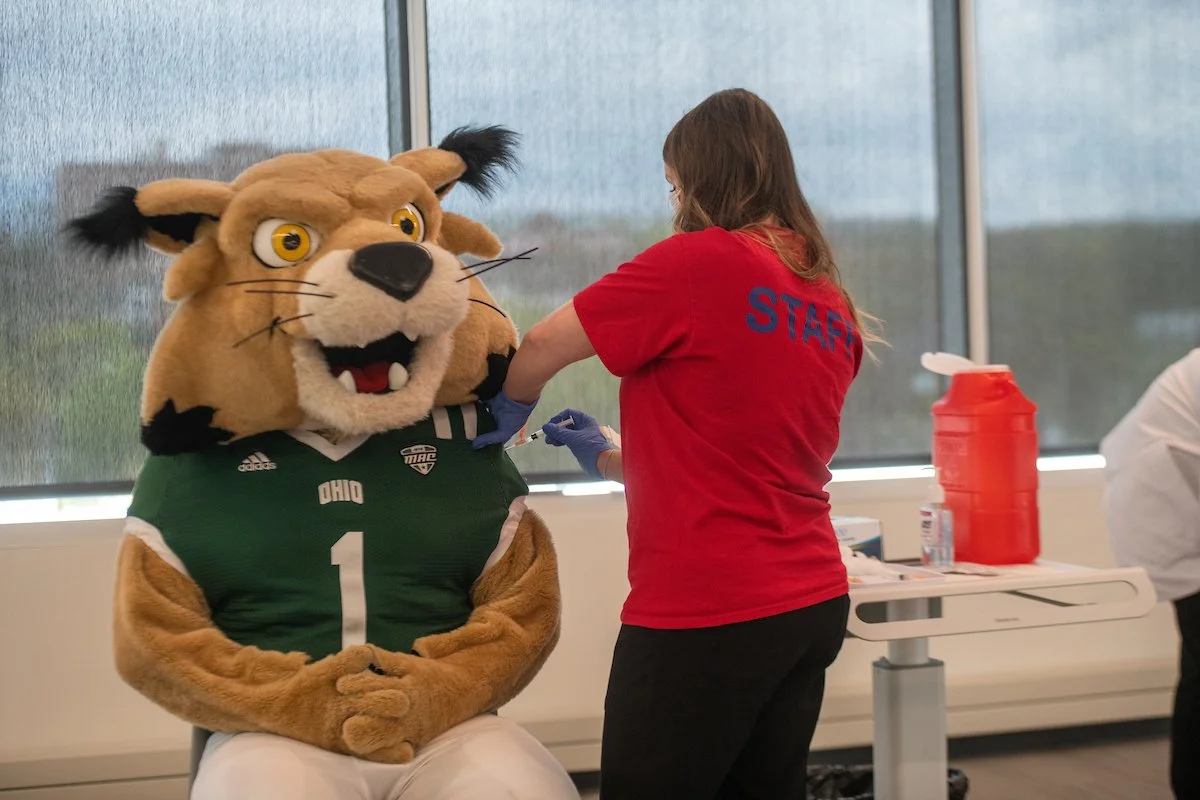COVID’s lasting impact on education five years later
Photo via The New Political
The social distancing floor stickers still visible around Ohio University’s campus serve as a reminder of life just five years ago. On March 13, 2020, the United States declared COVID-19 a nationwide emergency. Just three days later, schools began closing, and, by March 24, all states had shut down their educational institutions indefinitely.
The Shift to Online Learning
At the start of the pandemic, universities and students were forced to tackle the challenge of remote learning. While virtual classrooms were not necessarily new to students or instructors, they became an essential means to ensure continued education. Zoom, a popular platform for video conferencing, saw a sales increase of 370% in the last quarter of 2020 compared to the same quarter the previous year. This rapid shift to online education led to the adoption of various technologies aimed at enhancing the learning experience.
While the initial transition was difficult for many, there were also advancements that came out of it. A 2021 survey of faculty members and students from various U.S. colleges and universities found that the pandemic had led to increased usage and more favorable perceptions of online learning tools. Today, many universities continue to offer online courses, providing students greater flexibility in managing their studies.
COVID’s Toll on Mental Health
The transition to remote learning, though necessary, had far-reaching consequences. As the academic landscape abruptly shifted to virtual spaces, many students experienced isolation and disconnection due to the lack of in-person interactions and campus activities, contributing to increased feelings of loneliness, depression, and anxiety.
Similarly, faculty members, already under pressure to adapt their teaching methods to online platforms and learn new tools, found themselves overwhelmed by the significant effort required to maintain student engagement. Faculty burnout became a significant issue as professors adapted to the new demands of their profession. In response to these challenges, many universities expanded mental health services.
Teletherapy and virtual counseling sessions became the norm, offering a safe and convenient way to access mental health care. Some mental health resources at Ohio University include therapy, group counseling, support spaces, and “Let’s Talk” hours.
Redefining the “College Experience”
COVID-19 fundamentally changed higher education, altering how students experience campus life and engage with technology. As campuses reopened, universities faced the complex task of reintegrating traditional activities while mitigating risks. A great deal of effort was put into reopening plans, which assessed how to best balance standard campus life with health and safety concerns.
Some student organizations, such as those at Ohio State, saw significant declines in membership. These losses were largely attributed to a “leadership crisis”. Many of the organizations that were inactive during lockdown did not have student leaders to carry on the group once campus life resumed. However, many Gen-Z students were eager to find new ways to connect with peers. As students sought different ways to engage through student organizations and social media, the pandemic highlighted how technology became essential for both academic and social engagement.
Virtual platforms became vital for social engagement, extracurricular activities, and administrative functions, reshaping how students interact with their scholastic communities. Beyond organizations and social technology, the pandemic’s impact is expected to have lasting effects on higher education. It is estimated that the influence on K-12 education will have “ripple effects” making it increasingly difficult for today's students to attend college in the future.
Over the past five years, the COVID-19 pandemic has reshaped higher education in lasting ways. Universities were forced to rethink and reshape their approach to education, mental health services, and campus life as a whole. While there are still challenges ahead there is also opportunity for growth and innovation in university life.

